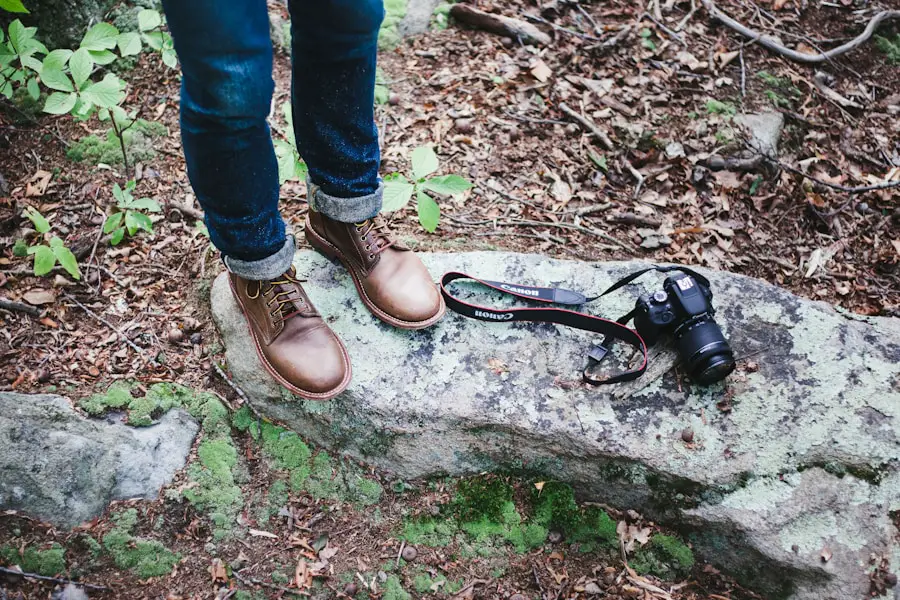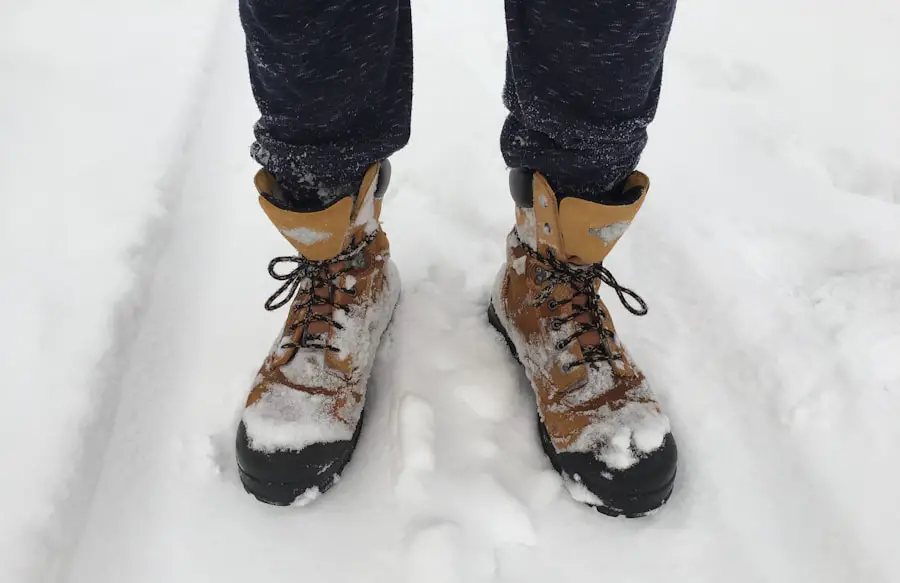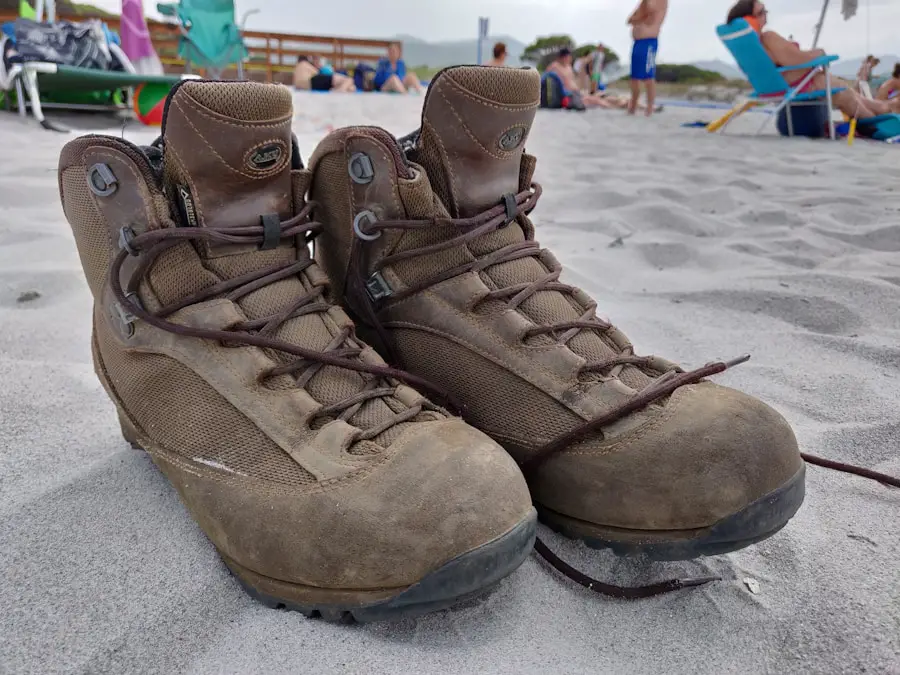Hiking boots are an essential piece of equipment for outdoor enthusiasts, designed specifically to provide the necessary support and protection for the feet during various terrains and conditions. Unlike regular footwear, hiking boots are engineered to withstand the rigors of nature, offering features that enhance stability, traction, and comfort. The evolution of hiking boots has been significant over the years, with advancements in materials and technology leading to a wide array of options tailored to different hiking styles and environments.
From rugged mountain trails to gentle forest paths, the right pair of hiking boots can make a substantial difference in the overall hiking experience. The market for hiking boots is diverse, catering to a range of activities from casual day hikes to challenging multi-day treks. This variety can be overwhelming for newcomers, as each type of boot serves a specific purpose.
For instance, lightweight boots are ideal for short hikes on well-maintained trails, while heavier, more robust models are suited for backcountry adventures where ankle support and durability are paramount. Understanding the unique features and benefits of hiking boots is crucial for anyone looking to invest in a pair that will meet their needs and enhance their outdoor experiences.
Key Takeaways
- Hiking boots are designed to provide support and protection for the feet and ankles during outdoor activities such as hiking and backpacking.
- Comfort and support are essential factors to consider when choosing hiking boots, as they can impact the overall hiking experience and prevent injuries.
- Durability and longevity are important qualities to look for in hiking boots, as they need to withstand rugged terrain and harsh weather conditions.
- While functionality is key, style and fashion have become increasingly important in the design of hiking boots, allowing for versatility in both outdoor and urban settings.
- Proper maintenance and care of hiking boots can extend their lifespan and ensure they continue to provide the necessary support and protection for the feet.
Comfort and Support
One of the primary considerations when selecting hiking boots is comfort, which directly impacts a hiker’s performance and enjoyment on the trail. A well-fitted boot should provide ample cushioning and support, particularly around the arch and heel areas. Many modern hiking boots incorporate advanced cushioning technologies, such as EVA foam or gel inserts, which absorb shock and reduce fatigue during long hikes.
Additionally, the fit of the boot is critical; it should be snug but not overly tight, allowing for some movement of the toes while preventing blisters and discomfort. Support is another vital aspect of hiking boots, particularly for those tackling uneven or rocky terrain. A boot with a sturdy midsole provides stability and helps distribute weight evenly across the foot.
This is especially important for hikers carrying heavy packs, as it reduces strain on the feet and legs. Furthermore, many hiking boots feature reinforced ankle support, which can prevent injuries such as sprains when navigating challenging trails. The combination of comfort and support not only enhances performance but also contributes to a more enjoyable hiking experience.
Durability and Longevity

Durability is a hallmark of quality hiking boots, as they are subjected to harsh conditions that can quickly wear down inferior footwear. High-quality materials such as leather, synthetic fabrics, and rubber are commonly used in the construction of hiking boots to ensure they can withstand abrasions, moisture, and varying temperatures. Leather boots, for instance, offer excellent durability and water resistance but may require more maintenance than synthetic options.
On the other hand, synthetic materials tend to be lighter and dry faster but may not provide the same level of protection against rugged terrain. The longevity of hiking boots is also influenced by their construction methods. Boots that feature reinforced stitching and high-quality soles tend to last longer than those made with cheaper materials or construction techniques.
For example, Vibram outsoles are renowned for their durability and traction, making them a popular choice among serious hikers. Investing in a well-constructed pair of hiking boots can save money in the long run, as they are less likely to need replacement after just a few hikes.
Style and Fashion
| Category | Metrics |
|---|---|
| Global Fashion Industry | 2.5 trillion in 2021 |
| Online Fashion Retail | Expected to reach 1.2 trillion by 2025 |
| Fast Fashion | Accounts for 10% of global carbon emissions |
| Luxury Fashion | Valued at 340 billion in 2021 |
| Sustainable Fashion | Expected to grow by 15% annually |
While functionality is paramount when it comes to hiking boots, style and fashion have become increasingly important in recent years. Many brands now offer a range of designs that cater not only to performance needs but also to aesthetic preferences. This shift has led to a growing trend where hikers seek boots that reflect their personal style while still providing the necessary features for outdoor activities.
From sleek, modern designs to classic rugged looks, there is a hiking boot available for every taste. The rise of athleisure has also influenced the design of hiking boots, with many models incorporating elements that make them suitable for casual wear beyond the trail. This versatility allows hikers to transition seamlessly from outdoor adventures to urban environments without sacrificing style.
Brands are now focusing on creating boots that not only perform well on rugged terrain but also look good when paired with everyday outfits. As a result, consumers have more options than ever before when it comes to finding a pair of hiking boots that align with their fashion sensibilities.
Versatility and Functionality
Hiking boots are designed with versatility in mind, making them suitable for a variety of outdoor activities beyond traditional hiking. Many models can easily transition from day hikes to backpacking trips or even light mountaineering. This adaptability is largely due to advancements in technology and design that allow for features such as waterproofing, breathability, and traction on different surfaces.
For instance, some hiking boots come equipped with Gore-Tex linings that keep feet dry in wet conditions while allowing moisture to escape, ensuring comfort during extended wear. Moreover, the functionality of hiking boots extends to their compatibility with various accessories. Many hikers choose to use gaiters with their boots to provide additional protection against mud, snow, or debris.
Additionally, some models are designed to accommodate custom insoles or orthotics for those who require extra support or cushioning. This level of customization enhances the overall functionality of hiking boots, allowing users to tailor their footwear to meet specific needs based on their individual foot shape or hiking style.
Maintenance and Care

Cleaning and Removing Dirt
Regular cleaning is crucial, especially after hikes in muddy or wet conditions. Dirt and debris can accumulate in the crevices of the boot, potentially leading to deterioration over time if not addressed. A simple cleaning routine using a soft brush or cloth to remove dirt, followed by rinsing with water.
Caring for Leather Boots
For leather boots, applying a specialized cleaner can help maintain suppleness and prevent cracking. In addition to cleaning, conditioning leather boots with appropriate products can enhance their water resistance and overall durability.
Inspection and Storage
It’s also important to periodically check the soles for signs of wear or damage; replacing worn-out soles can significantly extend the life of the boot. Storing hiking boots properly is another key aspect of maintenance; keeping them in a cool, dry place away from direct sunlight helps prevent materials from degrading over time. By following these maintenance practices, hikers can ensure their boots remain in top condition for many adventures ahead.
Potential Drawbacks
Despite their many advantages, hiking boots do come with potential drawbacks that users should consider before making a purchase. One common issue is weight; while some models are designed to be lightweight for ease of movement, others can be quite heavy due to their robust construction and added features. This added weight can lead to fatigue during long hikes, particularly for those who are not accustomed to carrying heavy footwear over extended distances.
Another drawback is the break-in period associated with many hiking boots. New users may find that their boots require time to mold to their feet before achieving optimal comfort. This process can lead to blisters or discomfort if hikers do not allow adequate time for adjustment before embarking on longer treks.
Additionally, while many hiking boots are designed with waterproofing features, they may not be entirely impervious to water under extreme conditions or prolonged exposure. Hikers should be aware of these limitations and choose their footwear based on the specific demands of their intended activities.
Can You Wear Hiking Boots Every Day?
The question of whether one can wear hiking boots every day is nuanced and depends on various factors including personal comfort preferences and lifestyle needs. For individuals who spend significant time outdoors or engage in activities that require sturdy footwear, wearing hiking boots daily may be practical and beneficial. The support and comfort they provide can be advantageous for those who are on their feet for extended periods or who frequently navigate uneven surfaces.
However, it’s essential to consider the context in which these boots will be worn daily. While they offer excellent support for outdoor activities, they may not always be suitable for urban environments or formal settings due to their bulkiness or style limitations. Additionally, wearing them continuously without proper care could lead to premature wear or discomfort if they are not designed for all-day use outside of hiking scenarios.
Ultimately, while hiking boots can serve as versatile footwear for various situations, individuals should assess their specific needs and environments before deciding to incorporate them into their everyday wardrobe.
If you’re someone who loves outdoor adventures, you may also be interested in reading about the
